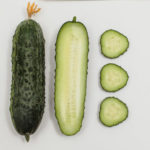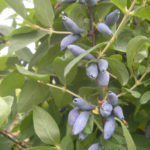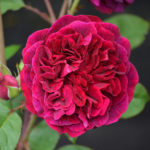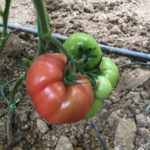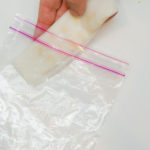Thuja western Khozeri
Compactness and neatness - these are the main criteria for choosing evergreens for decorating a garden design after an attractive appearance. One of the currently most popular varieties of western thuja that meets these indicators is the Khozeri variety (Thuja occidentalis Hoseri). On top of that, it is quite winter hardy and rarely falls prey to disease.
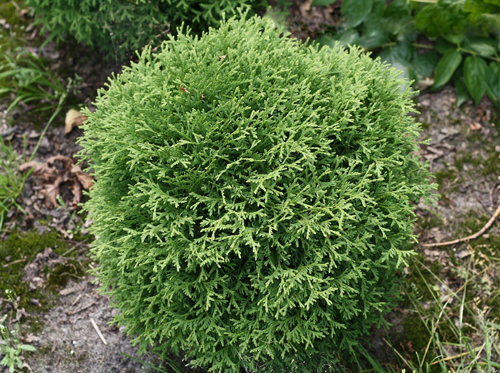
History of creation and description of the variety
Hoseri is an ephedra originating from Polish breeders. It is a miniature copy of the well-known variety of thuja western Globoza... An evergreen plant is initially spherical, eventually ovoid. The volumetric crown of the culture reaches 80 cm in diameter. The height of the shrub is similar. This ephedra gives the impression of a volumetric, symmetrical ball.
The shrub is formed by numerous, intertwining shoots with scaly, dense needles of a rich green, dark or gray-green color, which in late autumn is replaced by a bronze or brownish tint. Thus, this plant is attractive at any time of the year. By the way, in the spring, green tones return to its needles. The scaly outfit of the variety lives for three years, after which it falls off along with small branches. Ephedra is slow growing. In a year, he adds only 4-5 cm. The maximum growth is 10 cm. Other botanical features of Khozeri: the presence of a reddish-brown bark on the surface of the shoots, which tends to exfoliate, and branched, surface roots.
This variety of western thuja is characterized by high frost resistance (withstands a drop in air temperature in winter to -29 ° C), shade tolerance. He is not afraid of strong winds, but rather sensitive to drought. The plant is often affected by pests.

Features of agricultural technology
Coniferous culture develops well in openwork partial shade and in places where the sun is a frequent visitor. If these growing conditions are observed, the crown of thuja acquires a greater density, while in the shade the needles of the plant thins. Despite the wind resistance, it is not recommended to place the ephedra in the most open area, where strong, gusty winds dominate.
The plant needs soil to be moderately moist, fresh, fertile, with a slightly acidic reaction. However, the shrub grows well in nutrient-poor soil. However, for the normal development of the plant, it is better to take into account its preferences. Ideally, the culture needs a loamy substrate. It will not be harmed by temporary waterlogging of the soil. But overdrying an earthen coma is fraught with negative consequences for the ephedra.
Landing is that the plant is lowered into a previously prepared hole 0.6-0.8 meters deep. At the same time, the root neck of the thuja should be slightly above the ground level. You can prepare the substrate yourself by combining ordinary garden soil, sand and peat in a 2: 1: 1 ratio. Immediately after planting is complete, the shrub is watered at the root. In general, soil moistening is one of the most important measures for caring for a coniferous plant. It is carried out once a week. Up to 10 liters of water is poured under the bush. In addition, Hoseri is responsive to crown sprinkling.
The plant can not do without feeding. In the spring, it needs nitrogen fertilizers to stimulate growth and development. Autumn top dressing involves the enrichment of the soil under the ephedra with concentrates containing large amounts of potassium and phosphorus. This culture tolerates sanitary pruning well, during which the shrub is eliminated from dry, too weak, damaged and yellowed shoots.It is used in spring and autumn. For the winter, the shoots of the bush are tied and covered with spruce branches or non-woven material.
The most common pests of an evergreen plant are thuja false shield, spider mite, thuja aphid, bark beetle and May beetle larva. To prevent their occurrence, thuyu should be treated every spring with an insecticide solution - for example, Actellika.
Use cases
Khozeri will decorate a rock garden, a rocky and heather garden. It can be planted along the sides of garden paths, alone or in groups against a backdrop of lush green lawn. The compositions of this coniferous plant with decorative grasses, fragrant herbs, flowering annuals and perennials, ferns are wonderful. Spirea, viburnum, dogwood, garden barberry will serve as good companions for him. In front of the shrub, it is appropriate to place ground cover plants that will look like a variegated carpet. The variety is suitable for growing in containers. Thus, it can be used for landscaping balconies and roofs.
